Bertjan Pot’s Magnetized Slim Office
Bertjan Pot—author of the award winning Slim Table—makes no bones about his opinion of theory: “one should just design without being blocked by too much,” he says, “only when you’re stuck, desperate, or drunk should one spend more than 15 minutes concerning design theories.” The point is well taken, even though one suspects that philosophizing comes rather easily to the Dutch designer. A couple of years back, when tasked by Arco to create a piece to commemorate the manufacturer’s 100th. anniversary jubilee, he articulated an unusual aspiration:
“my first idea was to make something impossible, because if you make something that is possible, one might as well make it now instead of during the next 100 years. On the other end, making something impossible is not really the easiest thing to do.”
Slim Office. Designed by Bertjan Pot.
Once the dazed look clears and one gets past the tautological ramifications of this circular argument, the upshot of the, yes, theorizing is profoundly simple: Pot desires to create authentic innovations, in concept, use of materials, and execution. So what’s so impossible about the Slim Table? Well, beyond the physics defying appearance (and “Slim” doesn’t really begin to cut it—it rather looks as if it were made of whittled balsa wood), is the re-visioning of wood as “upholstery,” not to mention the re-invention of the office table into a magnetized canvas for drawers, waste bins, memo boards, pen holders, privacy panels, and cable-management magnets, hereafter known as the Slim Office.
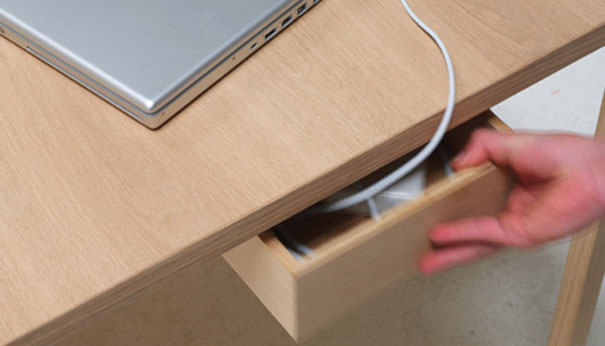

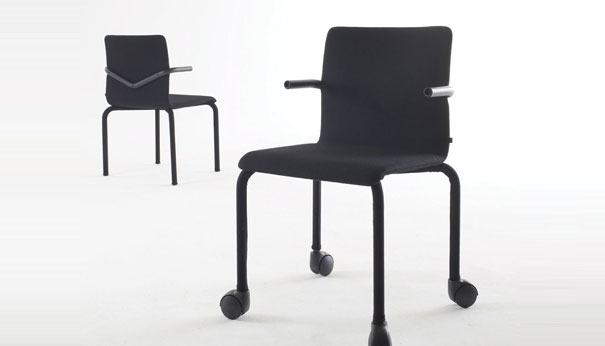
Pot acknowledges that much of the best work with wood (whether furnishings or large-scale architecture) is buttressed literally and figuratively with metal. The genesis of the Slim Table owes much to this pervasive truth, since Pot says that metal is easier to work with than wood, but wood is superior as a “skin” or “upholstery”: “having defined materials like that, the design for the slim table just came naturally—it’s an aluminum table laminated with a thin layer of wood measuring 100cm by 200cm by 75 with legs that are 4cm thick. So in the end I did end up with something that looks impossible and ready to collapse.”
Maybe so, but the truth is that not only will it stand up to the most demanding office environments, but also will “attract” all the aforementioned accessories. The result is an immensely functional office ensemble with an impossibly modern aesthetic. So thin it might seem to exist in only two dimensions, the Slim Table and its cohorts will defy your expectations about what wood and metal can do.
Via MocoLoco.
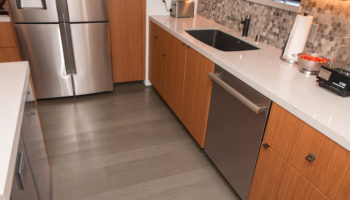
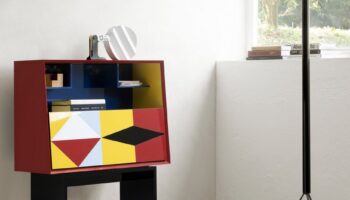
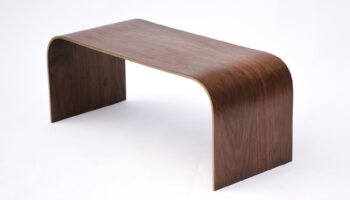

Leave a Reply